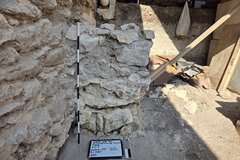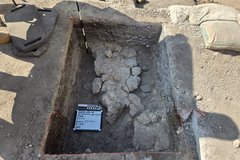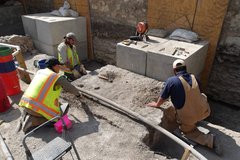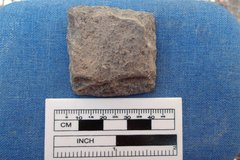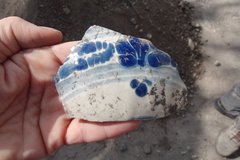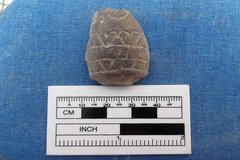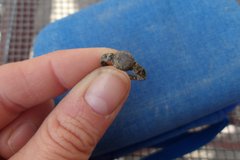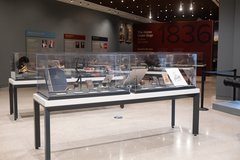Four excavation units were active this week.
Archaeologists reached a terminal depth of 150 cm below surface at EU-7. This unit had a minimum of two compacted lime surfaces that were preliminarily dated to the mission era. Archaeologists also completed the exposure of Feature 25, a stacked limestone structural feature. This feature was first encountered in EU-6. The large limestone blocks are stacked in a column-like manner and are adjacent to the historic Long Barrack wall. Based on the context of the feature and surrounding environment, it was constructed during the mission period. This feature will be preserved in place.
Within EU-26 archaeologists excavated to a depth of 60 cm below surface. Multiple utility conduits were running through this unit. Archaeologists recovered artifacts such as ceramics, nails, glass, and other metal fragments.
In EU-35, archaeologists dug a small extension unit with the goal of identifying the articulation of two previously encountered limestone alignments. Archaeologists exposed Features 3 and 33 earlier in the project and identified the alignments as part of the military occupation of the site. Feature 3 was running north to south and the southernmost end extended outside of the project area. Feature 33 extended east to west and its easternmost end also extended outside of the project area. Based on the location of these two alignments, archaeologists suspected they were related and potentially part of the same structure. EU-35 was placed in the anticipated location of the meeting of Features 3 and 33. Archaeologists did in fact find where these features met to create a corner. This corner, as well as the alignments, will be preserved in place.

